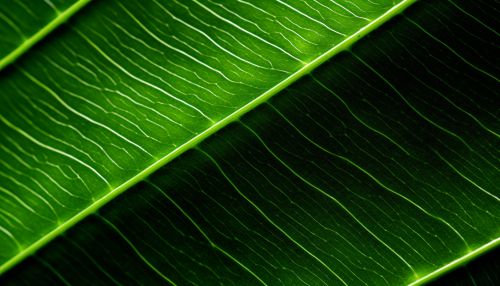Cuticle (botany)
Overview
The cuticle is a protective layer that covers the leaves, young shoots, and other aerial parts of many plants. Composed primarily of cutin, a complex fatty-acid polymer, the cuticle plays a crucial role in plant survival by limiting water loss, providing a barrier against pathogen invasion, and reducing UV radiation damage. The cuticle's structure and composition vary widely among plant species, reflecting adaptations to diverse environments and ecological niches.
Structure and Composition
The cuticle is typically composed of two layers: the cuticle proper (or cuticular layer) and the cuticular layer (or cuticle layer). The cuticle proper, the outermost layer, is primarily composed of cutin and waxes. Cutin is a complex fatty-acid polymer, while the waxes are a mixture of long-chain aliphatic compounds, such as alkanes, alcohols, and fatty acids. The cuticular layer, located beneath the cuticle proper, is composed of cutin and intracuticular waxes.


Function
The cuticle serves several essential functions in plants. Its primary role is to minimize water loss from the plant's aerial parts, particularly the leaves. By providing a hydrophobic barrier, the cuticle prevents excessive evaporation of water, helping the plant conserve water and survive in dry conditions. The cuticle also provides a physical barrier against pathogen invasion. The waxes and cutin in the cuticle can inhibit the growth of fungi and bacteria, reducing the likelihood of disease. Additionally, the cuticle can protect the plant from UV radiation damage. The waxes in the cuticle can scatter or absorb UV radiation, reducing the amount of radiation that reaches the underlying plant tissues.
Variation Among Plant Species
The structure and composition of the cuticle can vary widely among plant species. These variations reflect adaptations to different environments and ecological niches. For example, plants in arid environments often have thicker cuticles with higher wax content to minimize water loss. In contrast, plants in wet environments may have thinner cuticles. Some plants have cuticles with specialized structures, such as stomata, which allow for gas exchange.
Role in Plant Fossil Record
The cuticle's resistance to decay has made it a valuable tool in the study of the plant fossil record. Fossilized cuticles can provide information about the plant species present in a particular time and place, as well as the environmental conditions of that period. The study of fossilized cuticles is a branch of paleobotany known as cuticle analysis.
